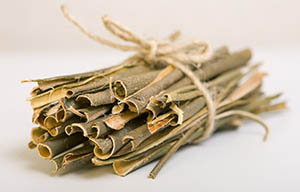
What are opioids prescribed for?
Today, you're likely to get a prescription for opioids for just about any kind of pain. That includes chronic pain, fibromyalgia, depression, headaches and toothaches. Doctors write 250 million prescriptions for these drugs every year.
What are the risks of taking opioids?

It's estimated that more than 2 million people in the U.S. are addicted to these prescription painkillers — and between 40 and 52 people die from taking them every single day.1
How has this happened?
In the 1990s, the pharmaceutical industry launched a huge marketing campaign to drive up profits by getting more people on these drugs. They began to push drugs like Oxycontin, Percocet, and Vicodin for even minor pains. They promised they weren't addictive.
Purdue Pharma — the maker of Oxycontin — started to give grants and other financial support to medical groups. Many — like the American Pain Society and the American Academy of Pain Medicine — took the cash. These groups then started advocating more use of opioids.
In 2009 the American Geriatrics Society changed its guidelines. They started to recommend opioids instead of over-the-counter pain remedies for all patients with moderate to severe pain.
The FDA stood by and watched all this happen. And it continues to approve new opioids with five to ten times the potential for abuse as Oxycontin. It even ignores the warnings of its own advisory committee so they can get more of these drugs on the market.
So now, Big Pharma is reaping obscene profits from the addiction epidemic they created.
This mess is just one more reason I'm glad I've spent so much of my life researching safe and natural cures for my patients. And I've found that nature has some powerful remedies for pain.
Two of the herbs I use — holy basil and white willow bark — have been used for thousands of years to ease pain.
What are natural remedies for pain relief?
1. Holy Basil (Ocimum sanctum linn)

This herb is so important I devoted an entire chapter to it in the new book, Healing Herbs of Paradise. It has a long and ancient history of treating arthritis in Ayurvedic medicine, the world's oldest health system.
Holy basil contains dozens of nutrients that reduce inflammation. One of the most powerful is called ursolic acid. It inhibits the inflammatory COX-2 enzyme. But it has none of the nasty side effects of pain drugs. And clinical studies prove holy basil relieves pain and reduces inflammation.
You can buy holy basil at most health food stores or on the Internet. To make a tea, all you need are a few leaves, dried or fresh. Add three heaping teaspoons of the leaves to a quart of hot water. Let them decoct for about 5 minutes. Strain into a cup and drink.
Holy basil capsules are also for sale online. Make sure the product you're buying has at least 2.5% ursolic acid to get the anti-inflammatory effect. I suggest 150 mg three or four times a day.
2. White Willow Bark

This plant contains salicin, the same compound found in aspirin. It comes from a tree native to Europe and Asia. Hippocrates had his patients chew on white willow bark to reduce inflammation.
Studies show it not only relieves arthritis pain but also increases mobility in the back, knees, hips and other joints. And a study in the American Journal of Medicinefound it effective for lower back pain.


